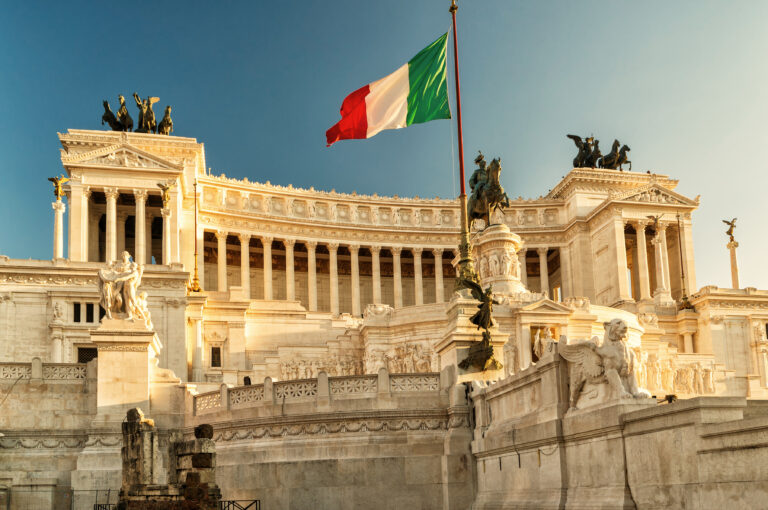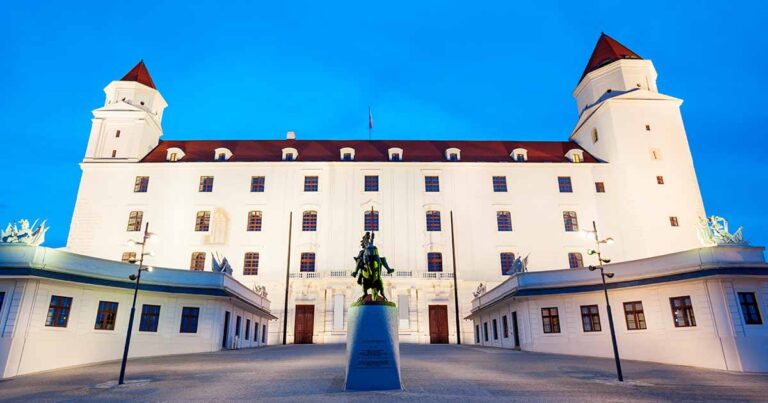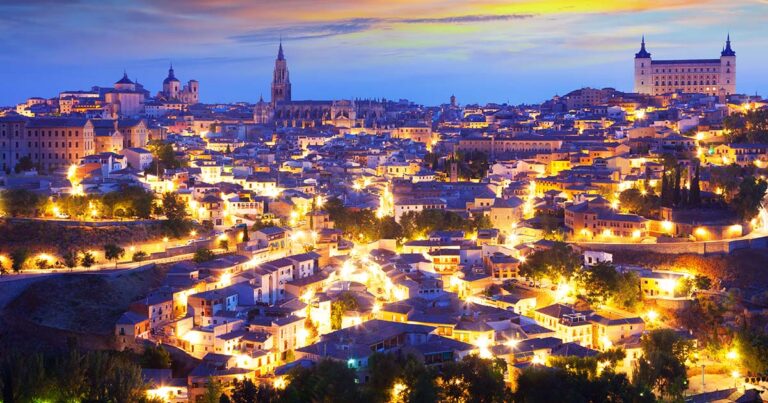Perched on the hillsides overlooking the Douro River, Porto, the second largest city in Portugal, is a captivating cocktail of history, vibrant culture, awe-inspiring architecture, and mesmerizing scenic beauty. With a rich history that spans back over 2,000 years, it is a place where the narrow winding streets and rustic buildings whisper tales of Roman emperors, Moorish conquests, and the Age of Discoveries.
Porto is located in the northwest of Portugal, along the Douro River valley, near the Atlantic coast. It’s approximately 313 km north of Lisbon, Portugal’s capital. The city’s location offers an inviting blend of river and sea landscapes, punctuated by rolling hills and beautiful vineyards.
The best time to visit Porto is from April to June and from September to November. During these months, the weather is generally pleasant and the city is less crowded than in peak summer (July-August). The average daytime temperature is around 15-20°C in spring (April-June), 25-30°C in summer (July-August), 15-25°C in autumn (September-November), and 10-15°C in winter (December-March).
A three to four-day visit is usually recommended for Porto. This gives you ample time to explore the city’s main sights and soak in the local culture, without feeling rushed. The city is walkable, and many of its highlights are located within close proximity of each other.
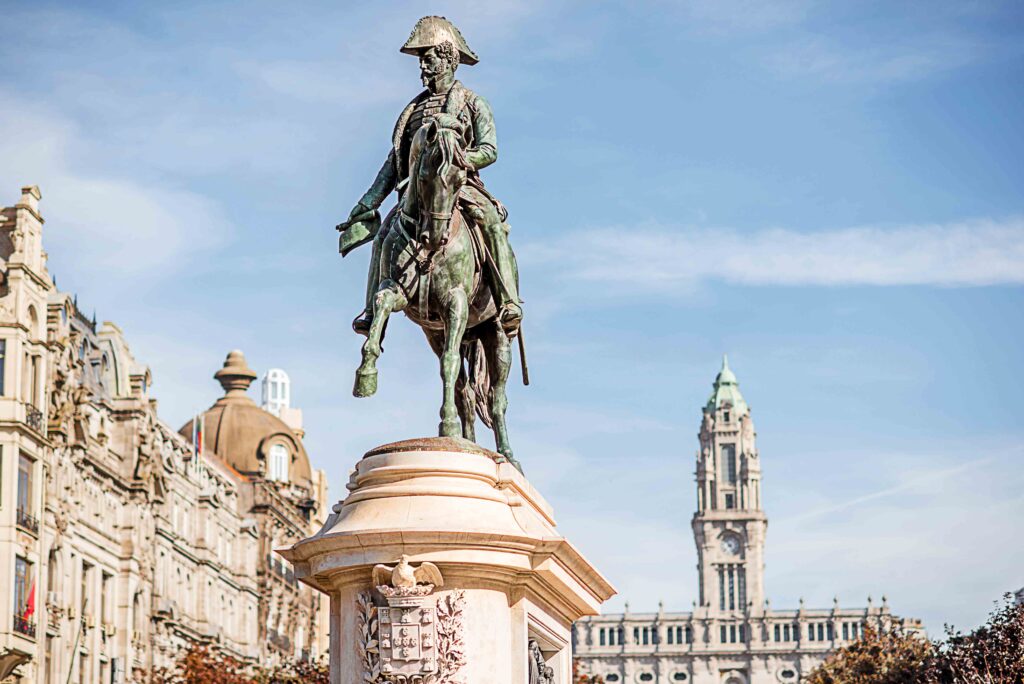
Best Activities in Porto:
Ribeira: The Ribeira district is the heart of Porto, with its narrow cobbled lanes, colorful facades, and traditional charm. This area is lined with quaint cafes, local shops, and numerous historic landmarks like the Church of São Francisco. Here, you can also explore the bustling square, Praça da Ribeira, known for its lively atmosphere, and the riverfront Cais da Ribeira, where you’ll see traditional ‘rabelo’ boats floating on the Douro. It’s a great place for a leisurely stroll, sipping a coffee, or enjoying a meal while absorbing the city’s vibrant energy.
Dom Luís I Bridge: An iconic symbol of Porto, the Dom Luís I Bridge was designed by a disciple of Gustave Eiffel and completed in 1886. The two-level metal arch bridge offers stunning views of the city and the Douro River. The lower level is used by vehicles and pedestrians, while the upper level is exclusively for the Metro and pedestrians. Walking across the top deck at sunset is particularly breathtaking, with panoramic vistas of the riverside and the port wine cellars of Vila Nova de Gaia.
Livraria Lello: A heaven for book lovers and a remarkable architectural gem, Livraria Lello’s ornate woodwork, stained glass ceiling, and the distinctive red staircase make it one of the most beautiful bookshops globally. It is believed that J.K. Rowling, who lived in Porto teaching English in the early 1990s, drew inspiration from its intricate interior for her Harry Potter series. Remember to buy your ticket online beforehand, which can be redeemed against a book purchase.
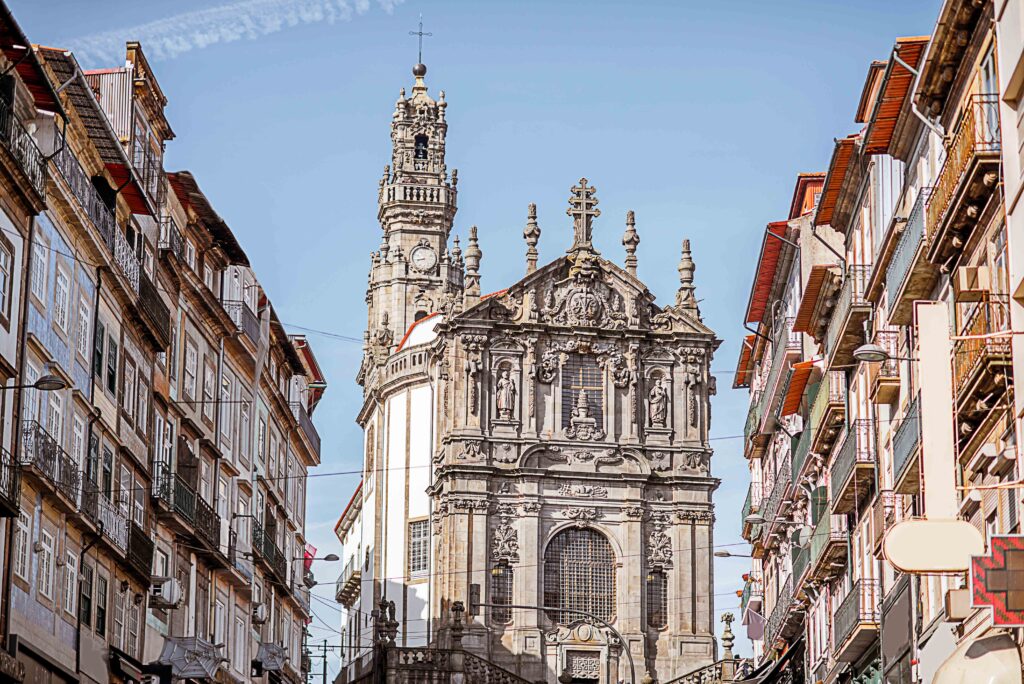
- São Bento Railway Station:
This early 20th-century railway station is notable for its entrance hall adorned with approximately 20,000 azulejos (blue and white ceramic tiles) that illustrate Portugal’s history, Porto’s historical events, and scenes of everyday life. These panels, crafted by Jorge Colaço, took over a decade to complete and stand as an artwork in their own right. - Clérigos Tower:
The baroque-style Clérigos Church and its tall bell tower is a prominent feature of Porto’s skyline. It may be challenging to climb up its 200-step narrow spiral staircase, but the reward is an unbeatable panoramic view of Porto. The tower is especially beautiful at night when it is illuminated. - Port Wine Cellars:
Vila Nova de Gaia, the city just across the Douro River, is renowned for its port wine cellars. Companies like Sandeman, Taylor’s, and Graham’s offer guided tours where you can learn about the history and process of making the distinctive fortified wine. The tours usually conclude with tastings where you can sample various types of port wine. Don’t miss out on a sip of the famous tawny and ruby ports.
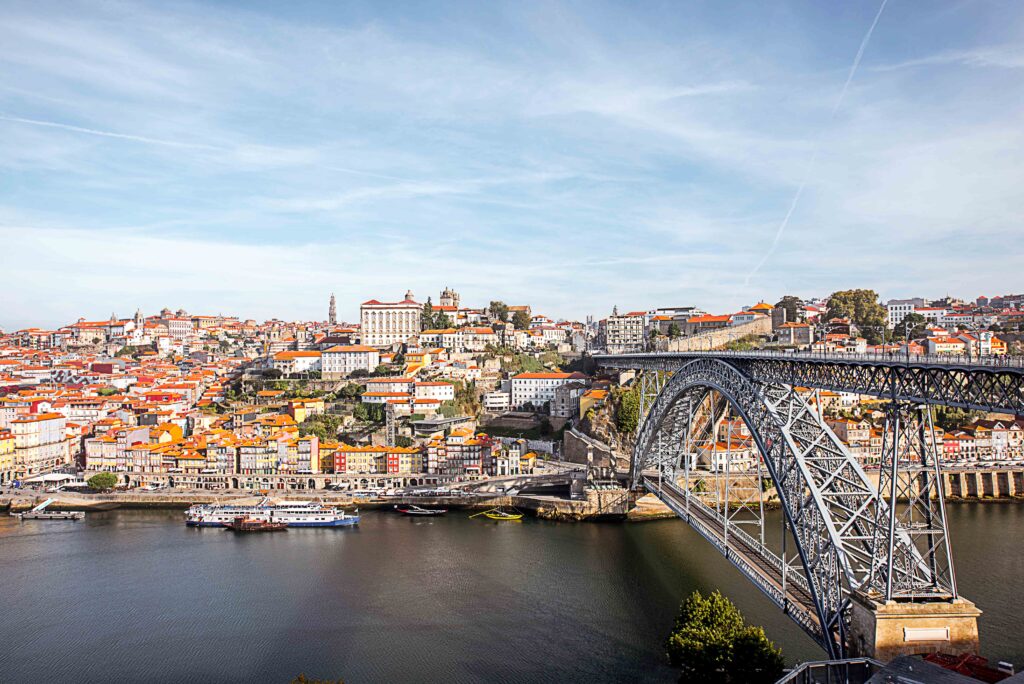
- Serralves Museum and Gardens:
An oasis of contemporary art in Porto, the Serralves Museum showcases a rotating collection of artworks from the late 1960s onwards. The museum building, designed by Pritzker Prize-winner Álvaro Siza Vieira, is a piece of art in itself. The surrounding gardens stretch over 18 hectares, featuring formal gardens, woodlands, a farm, and a contemporary art park. It’s an ideal spot for leisurely exploration and picnics. - Foz do Douro:
Where the Douro River meets the Atlantic Ocean lies the picturesque neighborhood of Foz do Douro. Its wide promenade, lined with palm trees and punctuated by Pergola da Foz, an ornate golden structure, is perfect for a seaside walk. The area also features a lighthouse, sandy beaches, and trendy restaurants and bars offering seafood and views of the sunset over the ocean. - Bolhao Market:
Mercado do Bolhão is Porto’s traditional food market, where you can find a variety of local products from fresh fruits, vegetables, meats, and fish to cheese, olives, and pastries. The market is also home to several small restaurants where you can sample local dishes. Try the famed ‘francesinha’, a sandwich layered with different meats, covered with melted cheese and a rich tomato and beer sauce.
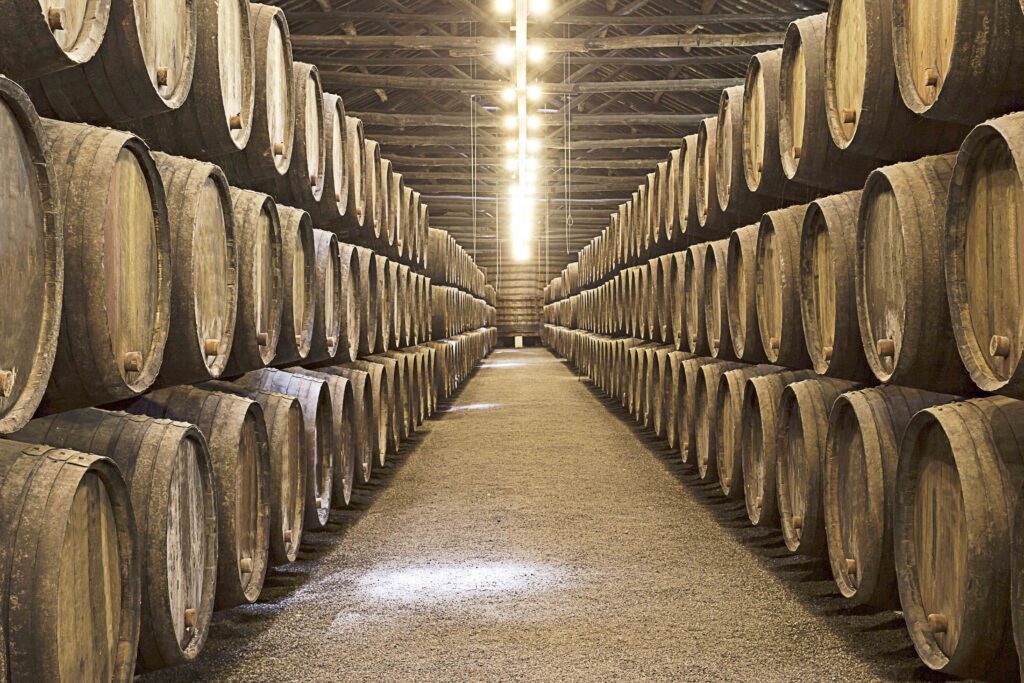
- Palacio da Bolsa:
This neoclassical building was the former stock exchange of Porto. It’s worth taking a guided tour to appreciate the magnificent interiors, which include the golden ‘Salão Árabe’ (Arabian Hall), inspired by Granada’s Alhambra, and the beautiful Pátio das Nações (Court of Nations) under a large glass dome. The Palácio da Bolsa is not just a historical site, but also a cultural venue that hosts concerts and exhibitions. - Palacio da Bolsa:
This neoclassical building was the former stock exchange of Porto. It’s worth taking a guided tour to appreciate the magnificent interiors, which include the golden ‘Salão Árabe’ (Arabian Hall), inspired by Granada’s Alhambra, and the beautiful Pátio das Nações (Court of Nations) under a large glass dome. The Palácio da Bolsa is not just a historical site, but also a cultural venue that hosts concerts and exhibitions. - Casa da Música:
A marvel of modern architecture designed by the renowned architect Rem Koolhaas, Casa da Música stands out amid Porto’s predominantly historic architecture. It is the city’s primary concert hall and home to various classical, jazz, and contemporary music events. Even if you don’t catch a show, it’s worth touring the building to appreciate its innovative design.
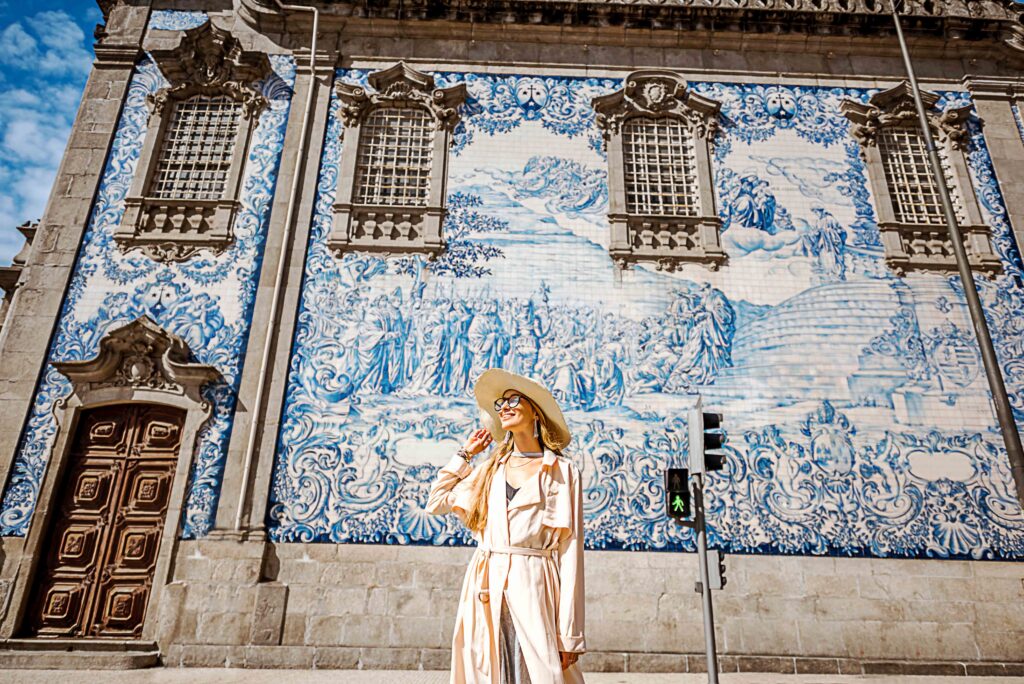
- Church of Saint Ildefonso:
Located near Batalha Square, this 18th-century church stands out with approximately 11,000 blue and white azulejos (ceramic tiles) adorning its façade. These tiles, added in the early 20th century, depict scenes from the life of Saint Ildefonso and the Gospel. The baroque interior, with its ornate golden altar, is equally impressive. - Jardins do Palácio de Cristal:
Overlooking the Douro River, these gardens offer breathtaking views of Porto and Vila Nova de Gaia. Besides the scenic viewpoints, the gardens feature fountains, statues, themed garden areas, and peacocks roaming freely. It’s an ideal spot to relax, take in the views, and enjoy a leisurely stroll amid lush greenery. - Rua de Santa Catarina:
If shopping is on your list, this pedestrianized street is Porto’s main shopping hub. Lined with historic buildings, street performers, and a variety of stores ranging from local boutiques to international chains, it’s bustling with activity. Don’t forget to make a stop at the iconic Café Majestic, a historic and ornate café dating back to the 1920s, renowned for its belle époque décor and delightful pastries. - Museu Nacional Soares dos Reis:
Situated in the Palácio dos Carrancas, this national museum showcases a collection of Portuguese art spanning from the 16th to the 20th century. The collection includes sculptures, paintings, decorative arts, and more, with works by esteemed artists such as Silva Porto and Amadeo de Souza-Cardoso. The museum is named after the sculptor António Soares dos Reis, whose work also features prominently.

